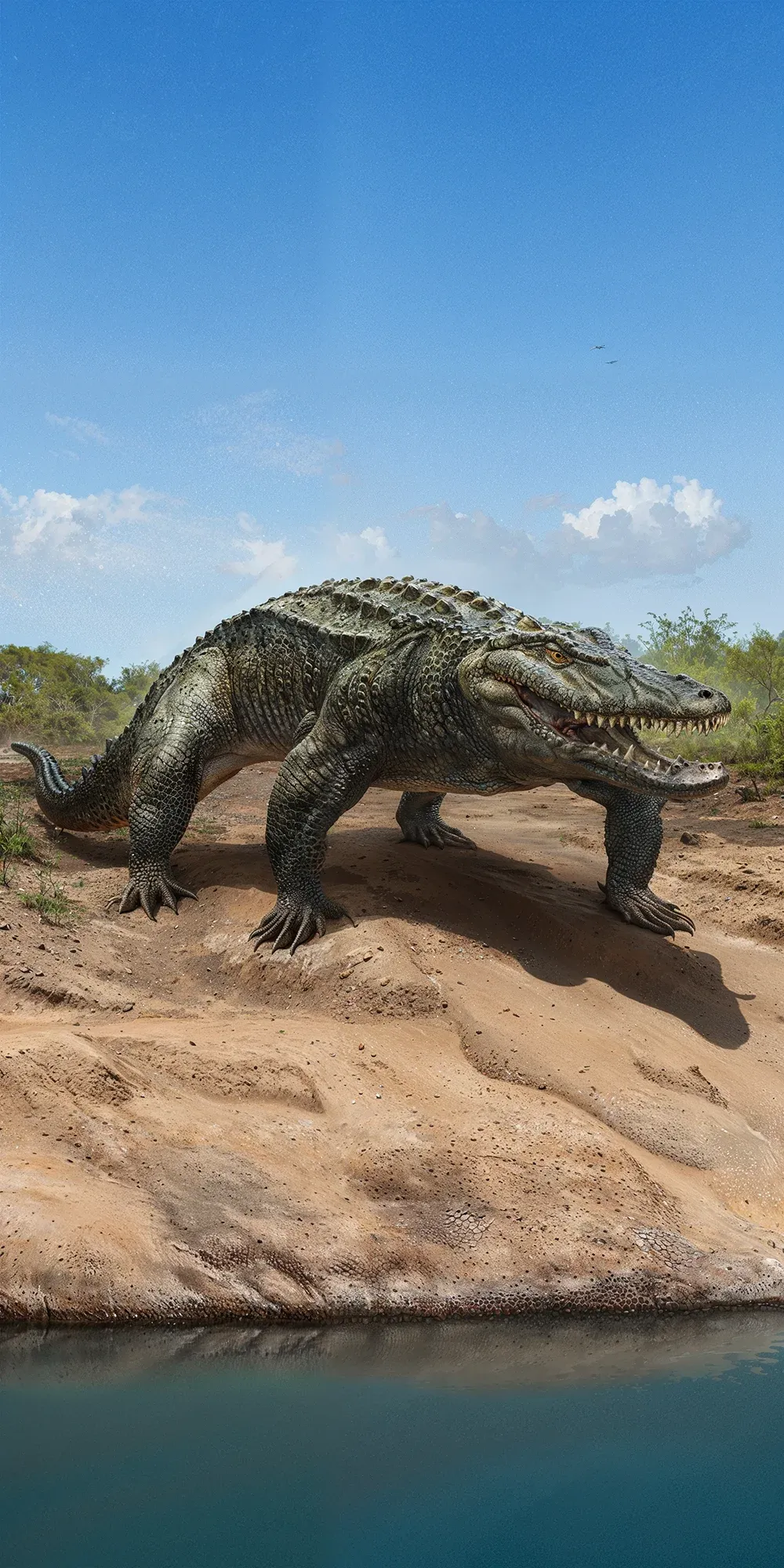The Quinkana
The Quinkana, also known as the "giant ripper lizard," was a large prehistoric carnivorous reptile that lived in Australia during the Pleistocene era. It had a powerful jaw with serrated teeth, a streamlined body for swimming, and sharp claws for catching prey. Quinkana's fossils indicate that it could grow up to 5 meters in length, making it one of the top predators in its ecosystem.

| Quinkana | |
|---|---|
| Size | Up to 13 feet (4 meters) |
| Weight | Up to 1,100 pounds (500 kilograms) |
| Speed | 30mph (48km/h) |
| Key Strength | Powerful jaws and sharp teeth |
| Biggest Weakness | Slender body |
| Scientific Name | Quinkana |
| Family | Crocodylidae |
| Habitat | Freshwater environments |
| Geography | Australia |
| Diet | Carnivorous |
| Lifespan | 10 years - 15 years |

The Quinkana
The Quinkana, also known as the "giant ripper lizard," was a large prehistoric carnivorous reptile that lived in Australia during the Pleistocene era. It had a powerful jaw with serrated teeth, a streamlined body for swimming, and sharp claws for catching prey. Quinkana's fossils indicate that it could grow up to 5 meters in length, making it one of the top predators in its ecosystem.
Fun Fact: Quinkana was an apex predator, hunting animals such as giant kangaroos and diprotodonts that inhabited Australia during its time.
| Quinkana | |
|---|---|
| Size | Up to 13 feet (4 meters) |
| Weight | Up to 1,100 pounds (500 kilograms) |
| Speed | 30mph (48km/h) |
| Key Strength | Powerful jaws and sharp teeth |
| Biggest Weakness | Slender body |
| Scientific Name | Quinkana |
| Family | Crocodylidae |
| Habitat | Freshwater environments |
| Geography | Australia |
| Diet | Carnivorous |
| Lifespan | 10 years - 15 years |
Quinkana Matchups
We use AI to simulate matchups between the Quinkana and other animals. Our simulation considers size, strength, and natural predatory behaviors to determine the most likely outcome.
Quinkana: Diet, Predators, Aggression, and Defensive Behaviors
What did Quinkana eat?
Quinkana were carnivorous predators that primarily fed on a diet of small to medium-sized vertebrates. They hunted and consumed animals such as fish, turtles, frogs, and even small dinosaurs or other reptiles. Their sharp teeth and powerful jaws allowed them to effectively capture and consume their prey.
Did Quinkana have any predators?
As apex predators in their environment, Quinkana did not have any natural predators that posed a significant threat to them. Their large size, formidable bite force, and hunting skills made them dominant hunters in their ecosystem.
Were Quinkana aggressive?
Quinkana were known to be highly aggressive predators, especially when it came to defending their territory or securing food. Their behavior was comparable to that of modern-day crocodiles, displaying ambush tactics and aggressive hunting strategies to capture their prey.
Did Quinkana fight?
Quinkana were solitary creatures that typically did not interact with others of their kind outside of mating seasons. However, when it came to territorial disputes or competition over resources, they were not hesitant to engage in physical conflicts with rival Quinkana individuals. These fights could be intense and often resulted in injuries or fatalities.
How did Quinkana defend themselves?
Quinkana relied on their physical attributes, such as their powerful jaws, sharp teeth, and strong limbs, to defend themselves against potential threats. Their predatory nature allowed them to quickly assess a situation and act accordingly, whether it meant fighting off a rival or escaping from danger.
What was the biggest weakness of Quinkana in a fight?
Despite their impressive size and strength, Quinkana had a potential weakness in their ability to sustain prolonged physical exertion. Their bulky build and high metabolic rate required them to rest and recover after intense activities, making them vulnerable if a fight were to be prolonged. Additionally, injuries sustained during battles could weaken their fighting abilities and put them at a disadvantage.
Fun Fact: Despite its fearsome appearance, Quinkana was not a dinosaur but rather a type of crocodile-like reptile that became extinct around 40,000 years ago.
Fun Fact: Quinkana is thought to have been a fast and agile predator both on land and in the water, using its sharp teeth and claws to catch its prey.










